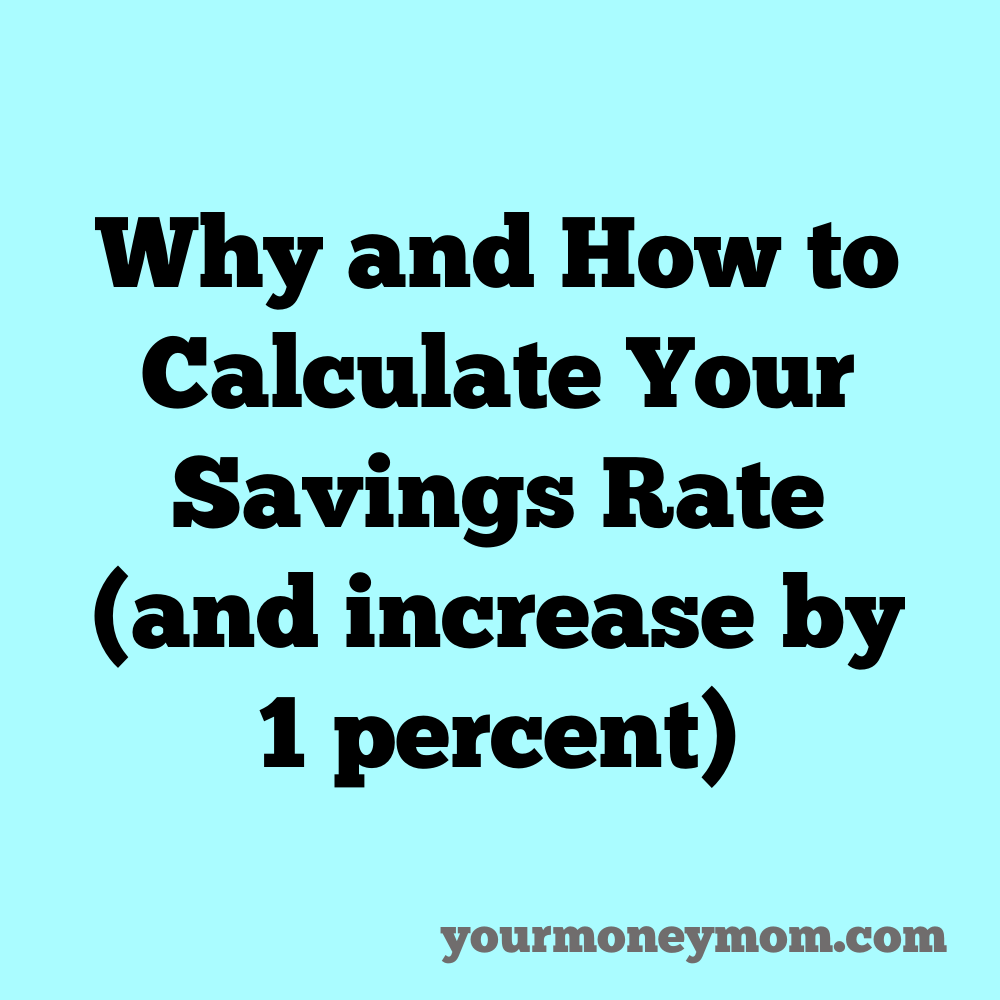
Time commitment: 20 minutes or more, depending on how long it takes you to decide what to include, and to find the information if you do not have it handy.
WHAT is a savings rate, and what should you include in it?
A savings rate is the percentage of your income that you save over the course of a year.
To give a super simple example, if you make $10,000, and save $5,000 of that money, you have a 50 percent savings rate. If you save $1,000, you have a 10 percent savings rate.
However, it can get tricky defining both income and savings. There is a wide range of what people include or exclude from both.
*is income before taxes or after taxes?
*does savings rate include the match that your employer contributes to your retirement plan at work?
*does it include the principal reduction in your mortgage or student loans over the course of the year?
Here’s one explanation from Investopedia on savings rates.
Know that there is no right way or wrong way to do this. You should consider the options, and include what makes the most sense for your situation.
Here’s what I do:
*use after-tax income as the base
*include 401(k) and other retirement savings accounts
*include the match for employer contributions
*include principal reduction in mortgage each year
(note: this is not how much you pay for your mortgage–or student loan, if you’re including this)–but how much your mortgage is reduced. That is easily found by checking the mortgage amount at the beginning and end of the year. The difference between the two is your principal reduction.)
I add up all the savings, and then divide it by after-tax income, and that gives me our savings rate.
Why is a savings rate important, and why should you know yours?
A savings rate is important for several reasons.
*A decent savings rate shows you can live within your means.
*Knowing your savings rate can help you set a goal to improve that number. Yes, even by 1 percent!
*A good savings rate can lead to financial independence and freedom.
There’s a famous blog post recommended often to explain the concept of savings rate and why increasing that number makes so much sense. “The Shockingly Simply Math Behind Early Retirement” on Mr. Money Mustache. This post is worth reading just for the math concepts he covers–while this site has a lot of solid information, I definitely do not agree with all of it or his website.
It’s also worth playing around with this calculator to see how different savings rate leads to a different number of years until financial independence.
How often should you calculate your savings rate?
In general, annually.
Bonus: if you are not happy with your savings rate once you do calculate it (or even if you are), consider taking the time this week to bump it up.
Take a moment to log into your work’s retirement account, and increase your contribution by 1 percent. You most likely will not notice the difference, but you will be automating saving so that you do not have to actively save in future.
WHERE should you (save money)?
Everyone’s situation is different, but here are some general ideas of places to save:
Roth IRA
This is really preferred for anyone who is eligible to open one, because the money goes in tax-free, and all the growth is tax-free. That goes double for teens and younger workers with relatively low income.
Work Retirement accounts
Those who work “w-2” type jobs often have a 401(k), 403(b), or other type of retirement savings vehicles. And many employers offer to “match” your contributions, which can also add to your savings rate.
If you’re self-employed, you should have an IRA of some kind that you can contribute to.
Taxable accounts
This could be at an higher-interest savings account bank (like you use for your multiple money funds , or a taxable brokerage account for longer term goals.
How to calculate your savings rate.
As noted above, your savings rate is very specific to you or your family. Just like your net worth, you might want to include things that others don’t, or exclude categories that others do include.
If you are on my e-mail list (sign up at the bottom of this post if not), you received a very simple spreadsheet this week to help you calculate your savings rate, and you can play around with it, adding in whatever makes sense to you.
I also found this online savings rate calculator. While it is still pretty simple, it is a little more complicated than mine.









